

A wonderful history of Tulunadu ruled by Major Tulu Rulers and her rich heritage....
By Edward DSouza
Bellevision Media Network
|
Dear Bellevision Viewers,
From the early age he was writing short stories and poems in various konkani periodicals such as Jhelo, Kurov etc…He has also written a tulu drama which was staged in 1998 in Kanajar Parish.
He is a Diploma holder in Automobile Engineering from Karnataka Polytechnic and presently working in Kuwait from past 8 years as an Operations Manager for a Trading Company. He also serves as the President of " Kanajar Welfare Association Kuwait"
Here below he wants to share his dream to write about Tulunadu History:
“ I had a dream to write about the history of my beautiful Tulunadu. I wish I could travel all the mentioned places, but never the less I will visit those historical places very soon.
According to my knowledge, the Tulunadu was very rich in the past. There were many royal families, who ruled our Tulunadu. I have tried to get the information as much as I could. According to the documents there were 11 major rulers. But due to lack of documents I could not able to write about some more royal families like Kumble Rajas, Nanda Rayas etc. The details of major Royal families are given below: “
Bellevision team would like to thank Edward for his dedication and efforts in writing this article on Tulunadu and permission to publish in Bellevision.com. This article is a bit lengthy and hence we will be publishing it in four parts.
|
Tulunadu as we see it today…….
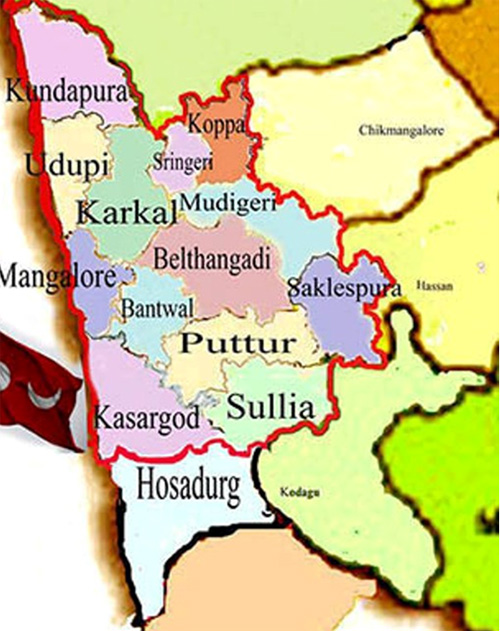
Tulu Nadu is the Tulu speaking region of Karnataka and Kerala, India. It consists of the Dakshina Kannada and Udupi districts and the northern parts of the Kasaragod district of Kerala up to the river Chandragiri. Tulu Nadu is bordered by the Arabian Sea to the west, Uttara Kannada to the north, Shivamogga to the north-east, Chikkamagaluru to the east, Kodagu and Hassan to the south-east and Kerala to the south. Tulu is the primary spoken language in the region, but other languages like Konkani, Kannada, and Beary are also spoken. Tulu Nadu spans an area of 8,441 km2 (3,259 sq mi), roughly 4.4% of the total geographical area of Karnataka. The population of this region is roughly 5,500,000. Mangalore and Udupi are the chief cities in Tulu Nadu. “
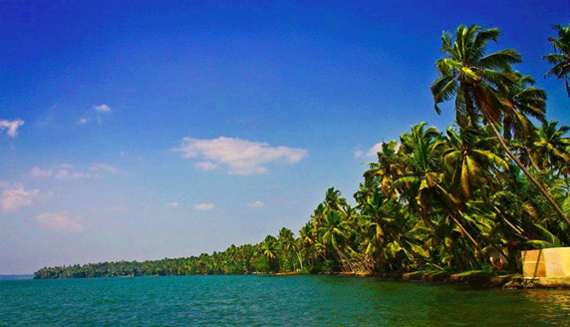
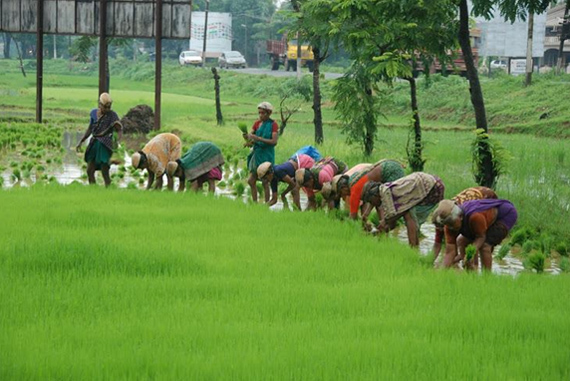
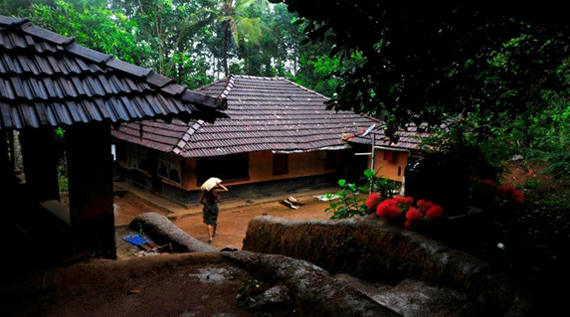
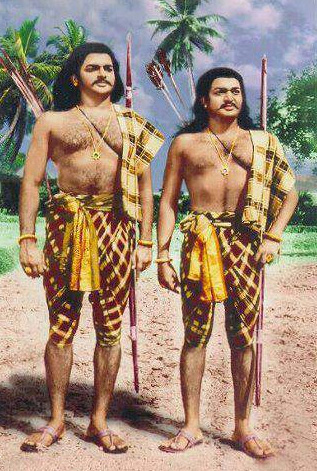
Bellevision.com is also grateful to Mr. Sarvotham Shetty (President, Abu Dhabi Karnataka Sangha) for his beautiful narration of Tulunadu in Tulu language which is given below alongwith some current tulunadu locations highlighting wonderful tulunadu culture and customs.

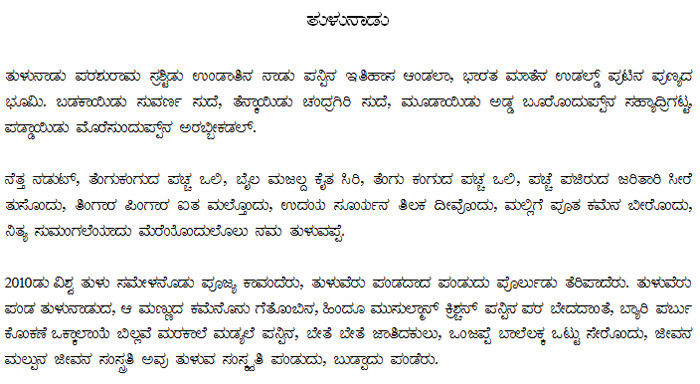
PART ONE…..
Chowtas of Moodabidri
Chowta (also Chauta) is a common surname of the Bunt people of Karnataka and Kerala, India. It is also the name of the Jain Bunt dynasty whci ruled certain parts of the Tulu Nadu region for several centuries (12th- 18th). Their succession to the throne was as per the Bunt custom of matrilineal inheritance (Aliyasantana).
The Chowtas initially ruled from their capital at Ullal and the first known king of the dynasty was Tirumalaraya Chowta I(1160-1179). His successor, Channaraya Chowta I (1179-1219), moved the capital inland to Puttige. Bhojaraya Chowta II (1470-1510) was the greatest of the Chowta rulers. He visited the court of Krishnadevaraya, the Vijayanagar emperor and received royal insignia from him.
The principality of Chowta split in 1544, with two separate capitals, one at Ullala, under the renowned Queen Abbakka Chowta and another at Puttige. Ullal branch seems to have become extinct and in Circa 1603, the Chowtas moved their capital to Moodabidri. In succeeding years Chowta power had greatly diminished due to invasions by Hyder Ali and Tipu Sultan with whom they signed treaties. Chandrasekhara Chikkaraya Chowta V was the last Chowta king who had some authority. He reigned from 1783 to 1822.
Following the conquest of South Canara by the British, the Chowtas lost all their power except that they received a small pension from the then government. Descendants of the Chowta rulers still survive and inhabit the Chowtara Aramane (Chowta Palace) of Moodabidri, which is known for its ornate carvings such as the Nava Nari Kunjara (Nine Damsel Elephants).
Ullal Dynasty……
Rani Abbakka Chowta was the Queen of Ullal who fought the Portuguese in the latter half of the 16th century. She belonged to the Chowta dynasty who ruled over parts of coastal Karnataka (Tulu Nadu). Their capital was Puttige. The port town of Ullal served as their subsidiary capital. The Portuguese made several attempts to capture Ullal as it was strategically located. But Abbakka repulsed each of their attacks for over four decades. For her bravery, she came to be known as Abhaya Rani (The Fearless Queen). She was also one of the earliest Indians to fight the colonial powers and is sometimes regarded as the ’first woman freedom fighter of India’.
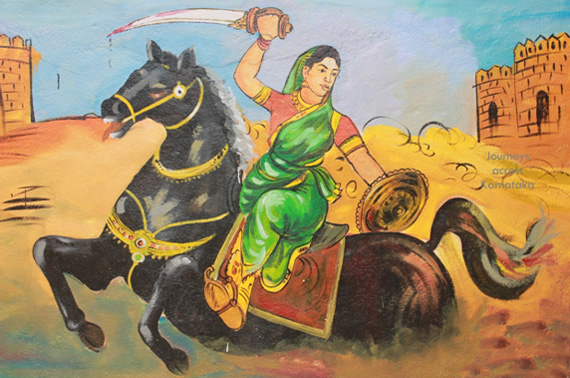
The Chowtas who were Jain Digambaras followed the system of matrilineal inheritance (Aliyasantana) by which Tirumala Raya, Abbakka’s uncle, crowned her the queen of Ullal. He also forged a matrimonial alliance for Abbakka with Lakshmappa Arasa, the powerful king of neighbouring Mangalore. This alliance was later to prove a source of worry for the Portuguese. Tirumala Raya also trained Abbakka in the different aspects of warfare and military strategy. The marriage, however, was short lived and Abbakka returned to Ullal. Her husband, thus, longed for revenge against Abbakka and later joined the Portuguese in their fight against Abbakka.
The Portuguese, clearly upset by Abbakka’s tactics, demanded that she pay them tribute, but Abbakka refused to yield. In 1555, the Portuguese sent Admiral Dom Álvaro da Silveira to fight her after she refused to pay them tribute. In the battle that followed, Rani Abbakka once again managed to hold her own and repulsed the attack successfully.
In 1557, the Portuguese plundered Mangalore and laid it waste. In 1568, they turned their attention to Ullal but Abbakka Rani resisted them yet again. João Peixoto, a Portuguese general and a fleet of soldiers were sent by the Portuguese Viceroy António Noronha. They managed to capture the city of Ullal and also entered the royal court. Rani Abbakka, however, escaped and took refuge in a mosque. The same night, she gathered around 200 of her soldiers and mounted an attack on the Portuguese. In the battle that ensued, General Peixoto was killed, seventy Portuguese soldiers were taken prisoners and many of the Portuguese retreated. In further attacks, Abbakka and her supporters killed Admiral Mascarenhas and the Portuguese were also forced to vacate the Mangalore fort.
In 1569, however, the Portuguese not only regained the Mangalore fort but also captured Kundapur (Basrur). Despite these gains, Abbakka continued to remain a source of threat. With the help of the queen’s estranged husband, the Portuguese mounted attacks on Ullal. Furious battles followed, but Abbakka held her own.
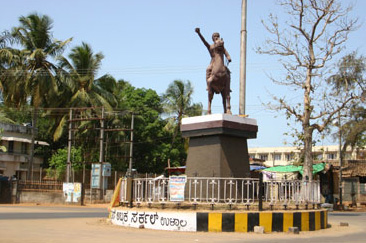
In 1570, Abbakka formed an alliance with the Bijapur Sultan of Ahmednagar and the Zamorine of Calicut, who were also opposing the Portuguese. Kutty Pokar Markar, the Zamorine’s general fought on behalf of Abbakka and destroyed the Portuguese fort at Mangalore but while returning he was killed by the Portuguese. Following these losses and her husband’s treachery, Abbakka lost the war. She was arrested and jailed. However, even in prison she revolted against the Portuguese and died fighting.
Ajilas of Venur Dynasty……
The Ajilas who ruled the region with Venur as their capital initially and later with Aladangadi have called themselves as belonging to Chandravamsha (Vamsha = family) and as Saluva Kings. Their dynasty included 16 Maganes (Mahaganas). Even to this day we can find their descendants residing at a palace called Aladangadi which was once their capital having a palace. We can also find another palace at Baraya, much older than the one at Aladangadi. The palace that was at Venur is in a dismantled state and the ruins can be found even to this day.
Even though the Ajilas existed in the region since many centuries, their stronghold over the region during the initial few centuries was not evident due to the domination of the Hoysalas. However, the Ajilas gained a firm hold over the region at the time of Hoysala KingVishnuvardhana’s son.
We can find references mentioning that the kingdom of Venur was called as Punjalike Kingdom. Latter on while its capital was shifted to Aladangadi it was called as the Aruva dynasty. They were said to be Jains and happen to be the devotees of Lord Mahlingeshwara (a Hindu deity) at Venur. An inscription (967 A.D.) found in the sanctum sanctorum of this temple stands as a historical testimony of the period of the royal dynasty. They included the words ’Sri Mahalingeshwara Prasanna’ in their royal emblem and all their correspondence as a mark of reverence to Lord Mahalingeshwara. One of the other records indicates that the Ajila’s consecrated the idol of Lord Mahalingeshwara at Venur about 1300 years ago. However, we do not have relevant documentation to support this fact. The presence of a structure similar to the Manastambha in front of the Mahalingeshwara temple indicates that this temple might have been built by Jain kings. They also belonged to the Aliyakattu tradition (a tradition that is prevalent in Dakshina Kannada district where in the kingdom/property of a person is inherited by their son-in-law instead of their son).

Further, an inscription of 1604 mentions that the Ajilas called themselves to be the descendants of Chamundanvaya. One of the reasons for this might be because they might have belonged to the family of Chamudaraya who consecrated the Bahubali idol at Shravanabelagola. The other reason might because of the fact that they also consecrated the Bahubali idol at Venur similar to the one at Shravanabelagola.
An inscription at Venur dated 1118 A.D. mentions that Sevyagellarasa was the first king of this dynasty. Timmanna Ajila-I (1154-1180) recaptured some of the areas ruled by Ajilas earlier. Further, he rejuvenated the ruined palace bearing the 7 storeyed pinnacles at Venur. After Timmanna Ajila-I the region was ruled by a king called as ’Punja’ for 6 years. This might be one of the reasons for Venur being called as ’Punjalike Rajya’.
Later, the Kadamba king Kamadeva conquered Punjalike Rajya and gave it over to Madhurakka Devi, the daughter-in-law of Timmannajila-I. It is found that Madhurakka Devi ruled over this region after Timmannajila-I. The palace at Venur was also under her control. During her regime the Ajila kingdom included 13 Maganes. Further, she built a palace, a Jain temple and a Hindu temple at her capital Aladangadi.
Madhurakka Devi was succeeded by her son Rayakumara Raja in 1186 A.D. He was succeeded by Timmanna Ajila-II, Pandyappa Ajila-I, Padumala Devi-I, Shankara Devi, Timmana Ajila-III, Madhurakka Devi-I, Pandyappa Ajila-II and Raya Kumara-II. There wasn’t any remarkable development during their regime. However, the kingdom flourished and was called as "Akkiya Ajila" (which means "The Ajilas with Rice") by their neighboring kings appreciating the state of affairs in the kingdom.
An inscription unearthed at Belthangady (a taluk centre near Venur) indicates that Venur was ruled by Ramadevi from 1430-1460 A.D.
One of the available references states that the region was ruled by Somanatha son of Ramadevi in 1489 A.D. It is also believed that Ramadevi also ruled the region for a certain period. One of the inscriptions at Moodabidri of 1515 A.D. mentions that Somnatha had made some donations to the Parshwanatha temple at Moodabidri. Another inscription mentions about Saluva Pandyappa Devarasa who ruled the region around 1537 A.D. His Prime Minister Binnani Baliya Aadya Devarasa built the Shanthishwara temple at Venur and had made some donations. They were said to be the followers of His Holiness Swasti Sri Lalithakeerthi Bhattarakha Swamiji of Karkala Jain Mutt. Further it is said that 16 Settys (merchants) and 366 businessmen were assisting them.
After the above kings, Timmanna Ajila-IV was the most famous of all. He succeeded the Ajila throne in 1550 A.D. He was one of the ardent followers of His Holiness Swasti Sri Charukeerthi Bhattarakha Swamiji of Moodabidri Jain Mutt and was conferred with the title "Dhanaradeya" (a person knows for donating). Further, inspired by his guru he consecrated the 35 feet high idol of Lord Bahubali at Venur. The idol is said to have been carved in a ’Kalyani’ (water tank) by a sculptor belonging to the family of Shambu Kalkuda the sculptor of the Bahubali idol at Karkala. A story related to the Bahubali idol states that there was a tussle between the Bhyarava kings of Karkala and Timmanna Ajila about the consecration of Bahubali idol. Finally the statue was installed on March 1, 1604. Every year the pada pooja of this statue is conducted on the 15th day of Phalguna Shuddha.
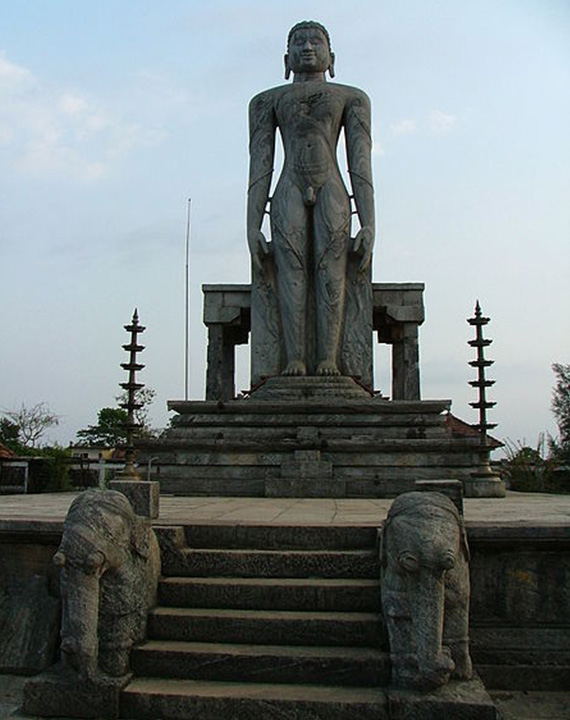
Timmanna Ajila-IV had three wives. The first wife Pandyakka Devi or Vardhamanakka and Second wife Mallidevi built the Chandranatha Basadi called as Eada Basadi to the left of Bahubali idol. The third wife Parshwadevi or Binnani built the Shanthishwara Basadi called as Bala Basadi to the right of Bahubali idol. Both the temples we built in 1604 A.D.
Madhurakka Devi-II succeeded Timmanna Ajila-IV in 1610 A.D. and ruled till 1647 A.D. References indicate that she conducted the first Mahamasthakabhisheka of Lord Bahubali at Venur. In an inscription of 1621 A.D. she is called as Madhurakkadevi Ammaji. She was an ardent follower of His Holiness Swasti Sri Lalithakeerthi Bhattarakha Swamiji of Karkala Jain Mutt. References indicate that she had donated for the Shanthishwara temple at Venur. Some of the Portugese records indicate that the Ajilas lost a battle against the rulers of Keladi in 1629 A.D.
From 1647 A.D. onwards Madhurakka Devi-II was succeeded by Pandyappa Ajila - III and other kings. Shantaradevi Ajila succeeded the throne in 1680 A.D. and continued to rule till 1725 A.D. She was succeeded her son Timmanma Arasa Ajila (1725-1755 A.D.). Some of the other kings succeeded him and continued the Ajila rule till 1786 A.D. Later on the Ajila’s came under the rule of Haider Ali and Tippu Sultan till 1799 A.D. After the death of Tippu Sultan in the 4th Anglo-Mysore war the Ajila’s came under the control of Britishers and lost their hold completely. Since then the Ajila’s received grants from the British Government.
Some of the records available from the the present house of Ajilas mentions the names of some of the heads of Ajila family who existed over the past century and half which include Padmaraja Ajila (1882-1905), Harishchandra Ajila (1905-1960) and Krishnaraja Ajila (1960-95).
Some of inscriptional references indicate that Venur was a commercial center consisting of different classes of merchants (Settykars, Elames and Halarus).
Punjalike Rajya
One of the inscriptions found in the pedestal of a 24 Tirthankaras bronze statue at Kallu Basadi mentions that Venur was also called as Punjalike Rajya. As already mentioned the region was ruled by a king called as ’Punja’ for 6 years and this might be one of the reasons for Venur being called as ’Punjalike Rajya’.
The current descendant of the Ajila Dynasty is Thimmnnarasa Dr. Padmaprasad Ajila, fourteenth in line through the matrilineal lineage of Veera Timmannarasa Ajila IV. The descendants of the Ajila rulers still survive and inhabit the Aladangadi Aramane (Ajila Palace).
 We are pleased to introduce yet another gentleman Mr. Edward D’Souza who is keen to write on local history. He was born and brought up in Kanajar (Udupi). In his younger days he was actively involved in youth activities and served as the President of ICYM Kanajar, President of ICYM Karkala Varado and also Secretary of Kanajar Catholic Sabha.
We are pleased to introduce yet another gentleman Mr. Edward D’Souza who is keen to write on local history. He was born and brought up in Kanajar (Udupi). In his younger days he was actively involved in youth activities and served as the President of ICYM Kanajar, President of ICYM Karkala Varado and also Secretary of Kanajar Catholic Sabha.